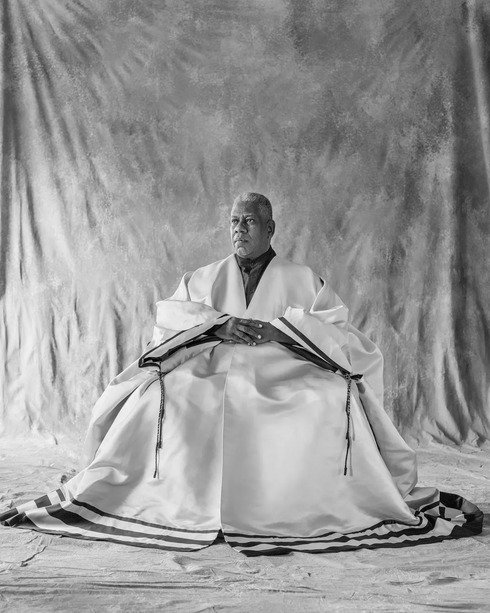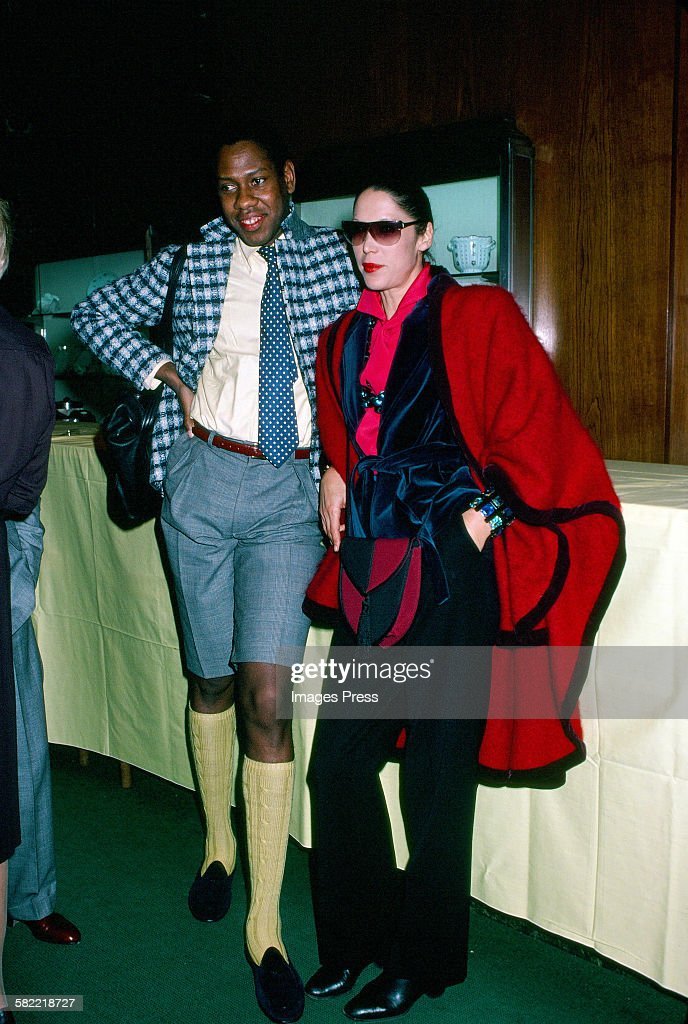Chiffon flowers for André Leon Talley
Image Courtesy: Vulture
André Leon Talley. That name alone is enough. His writing was as grandiose as his taste, and his candor was loud as he decided it should be. Looking into his life, with a legacy unparalleled, one could wax poetry for days about it. Every article straddled on his perfect marriages with designers and French and American socialites alike. His words stitched together a time in fashion akin to the Golden Age –it could even be claimed to be accurately seen as such. And as he toiled away at a typewriter in a jacket lined with Hermès scarves, every period slowly cemented his mark in both the fashion world and fashion history. In the busyness of dedicating himself to fashion, he, in turn, paved the way for other black men and women to be in it confidently: a part of his legacy that no true “fashionphile” should ever not know nor let slip their mind.
Image Courtesy: Getty Images
Of course, this zealous love for fashion starts like it does for so many others. Referencing his memoir The Chiffon Trenches, Talley found himself reading every book and magazine he could –Vogue found itself coupled into this endless reading list. It wouldn’t be until John F. Kennedy’s inauguration, when he saw Jackie Kennedy grace his TV screen wearing a pillbox hat and a Chez Ninon copy of a Dior original, that the young Talley would find himself forever influenced. Alongside himself in the appreciative gaze were the women in his life who took inspiration in her dress for their own Sunday Best. All of these influences took shape into a fantasy world of his own, full of photos, articles, names of french and fashion elites, and French fashion elites. The combination of these major influences in his life made him fond and fawn over fashion and the French –even officiating himself as a francophile. At this time in his life, Talley had spent his childhood and adolescence in Durham, North Carolina. Yet this segregated south could not contain him, so after graduating from North Carolina University with a Bachelor’s in French literature, he went to continue his studies in French at Brown University –dorming in the luxury of his first fashion indulgences of Yves Saint Laurent sheets and clothes by Rive Gauche. It would be these humble beginnings that André Leon Talley would not only define himself by but found confidence in.
Fast forward some years after graduating from Brown and having the right friends, Talley found himself working for Diana Vreeland. It’d be his time with her, alongside all his unpaid work, that would lay the grounds for his career. His writing, extensive knowledge, and awareness of fashion landed him in the graces of Oscar and Françoise de la Renta, Diane von Fürstenberg, Fred Hughes, and Andy Warhol. André Leon Talley found himself writing for Andy Warhol’s Interview magazine. Writing for Interview magazine eventually became writing for Women’s Wear Daily. And one day, his title as writer for Women’s Wear Daily changed to fashion editor for the magazine. This slow rise in his ascension to the upper echelon of fashion elites and editors gave him the right location to always be around the right people at all the right times. With these good graces, talent, respect, time, and discipline of himself, he made history as the first African-American male creative director at Vogue.
Even with this applause-worthy career-making, he simultaneously was and wasn’t André Leon Talley. Putting aside his Hermès scarves, Manoholo Blahniks, and custom Chanel capes, André Leon Talley was, at the end of the day, a black man. In a world that undermined, underpaid, and tried to forget him, Talley found himself being punished for his confidence and ability as a creative through his blackness. Supposed friends calling him racist names like “Queen Kong,” employers canning him rather than being there for him, and so many trying to find any opportunity they could to disgrace him. Despite these barriers, Talley did his best to navigate them and prevailed.
Through his perseverance, he became an inspiration to several other young and up-and-coming black creatives. Those inspired ranged from stylists to designers, for it was in every confident step he took that so many others found the confidence to follow suit in their own style. He helped usher in a new and diverse wave of young creatives into a field that was, and still is, needed.
The toil of his life’s work will not nor ever go unnoticed. His life was a work of art in of itself. No amount of praise could compare to who he was and what he did. He was a man of great stature, one that weaved beautifully through chiffon trenches.
Strike Out,
Alyssa Quarrie
Boca Raton
Alyssa Quarrie is a Content Writer for Strike Magazine Boca. When she’s not losing herself in another book, she’s working out with friends, looking for flights, and thrifting her wallet away. You can reach her at alyssaquarrie@gmail.com


